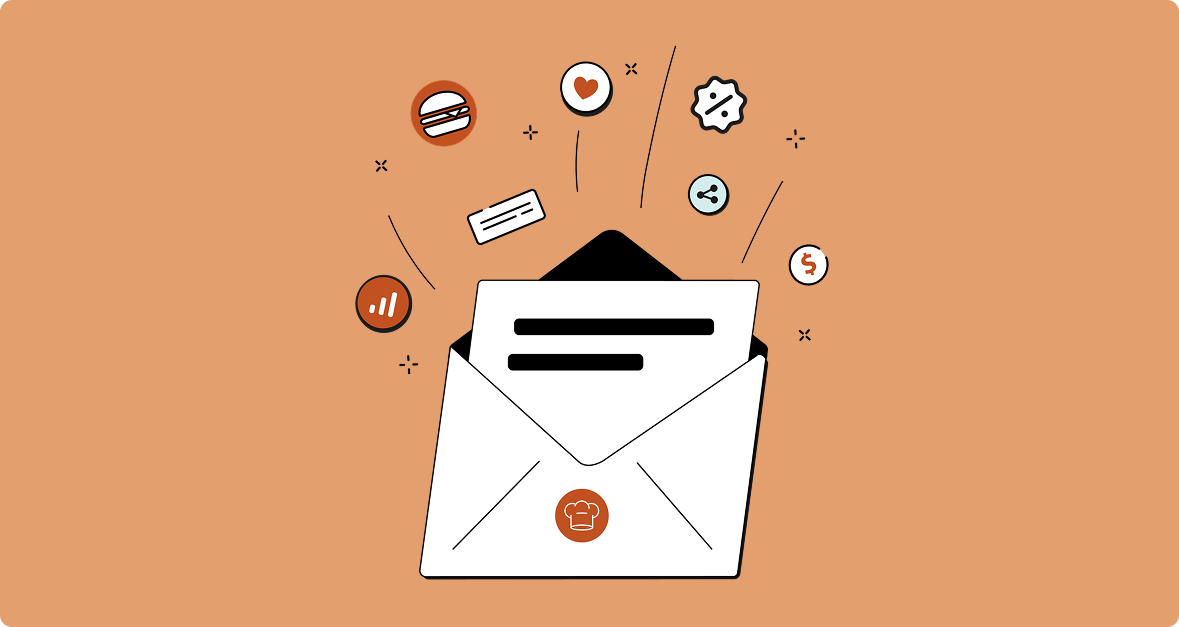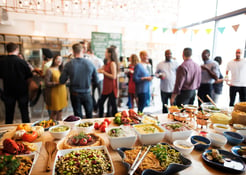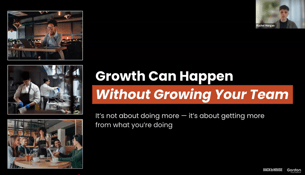A good restaurant loyalty program should do two things:
- Keep your customers coming back by rewarding repeat business with points, perks, and exclusive offers
- Gather valuable data about your customers like their favorite dishes, how often they visit, and which days of the week they’re most likely to drop by
You can use this information to create more personalized offers and improve the customer experience. But if you aren’t using the valuable data provided by your POS (point of sale) system to power your loyalty program, you’re missing out on a huge piece of the puzzle.
Today, we’re going to help you complete the puzzle with a closer look at how your POS data can juice your loyalty program. First, let’s get a quick overview of loyalty programs and how they work.
How Restaurant Loyalty Programs Work
Loyalty programs are structured marketing strategies that offer customers perks and rewards in exchange for spending and repeat visits. There are several different kinds of loyalty programs including:
- Points-based loyalty programs
- Tiered membership programs
- Subscription programs
However, the basic premise is the same for each type of program — the more your customers visit and spend, the more valuable the perks they enjoy.
And there’s evidence that a good restaurant loyalty program truly does incentivize repeat visits. The 2025 Dining Trends Report from TouchBistro reveals that 53% of loyalty program members are eating out weekly or more often. At a time when restaurant owners are grappling with high costs and reduced foot traffic, this is a compelling statistic.
However, a truly effective loyalty program isn’t just tit-for-tat, where your customers give you money and you give them rewards. It’s also an invaluable way to get to know your customers better and understand their preferences more deeply. This is where your loyalty program and your POS system meet.
Why POS System/Loyalty Program Integration Matters
When it comes to running an effective loyalty program, good data is the name of the game. Obviously your loyalty program is about rewarding your best customers and giving them reasons to return to your restaurant.
That’s why collecting meaningful data on your customer spending habits and preferences is absolutely critical. It gives you the opportunity to truly understand the kinds of rewards your customers value and the kinds of experiences that keep them coming back.
Your loyalty program is an avenue for personalizing the guest experience, tailoring offers directly to customers based on their personal preferences, and creating a more emotional connection between your brand and your repeat customers.
Here’s where your POS system is so essential. It provides vital data points including:
- Food sales
- Alcohol sales
- Hourly sales data
- Product mix
- Sales mix
- Labor costs per hour
5 Ways Your POS Could be Helping Your Restaurant Loyalty Program
So what do these data points have to do with your loyalty program? Everything! We caught up with Back of House expert and industry veteran David Wisdom to find out exactly how you could be using your POS system to take your loyalty program to new heights. Here’s what we learned.
1. Track Dining Patterns Using Hourly Sales Data
Some leading POS providers make it extremely easy to see how your customers prefer to patronize your restaurant. For instance, Toast offers an integrated loyalty program that allows you to segment customers based on whether they prefer to order delivery or dine in; whether they tend to visit for happy hour or Sunday brunch; whether they visit once a month or twice a year.
“Offer your best takeout customers free delivery and offer your best dine-in customers a free appetizer with a sit-down meal.” suggests David. “Send happy hour promos to your afternoon regulars, target your best brunchers with mimosa specials, and send enticing discounts to guests who haven’t visited in a few months.”
Use your POS system to identify individual dining patterns, and craft your perks, promos, and outreach to match.
2. Create Opportunities for Upselling Using Product Mix Data
Your POS provides a data point called “product mix.” This figure tells you which items are selling well, which items could be doing better, and which ones are just collecting dust on your menu.
This is great information when it comes to updating and adjusting your menu. But it goes a bit deeper than that, especially when you combine this data with your restaurant loyalty program.
Once you understand your product mix, you can build promotions around your most popular dishes. Use these top-sellers to draw in your repeat customers.


Subscribe to Our Monthly Marketing Newsletter
Get proven strategies and tools to attract new customers, boost engagement, and grow your brand.
“Guess what…there’s more,” says David. “Your product mix can also help you pinpoint opportunities for upselling or add-ons built around popular dishes. This means you can strategically position discounts and giveaways for loyalty program members based on how popular your dishes are and whether they create good opportunities for upselling.”
3. Use Food Sales Data To Build Promotions Around High Profit-Margin Items
Your POS should be providing you with detailed food sales data. This means you can drill down extremely specific observations. For example, your food sales data will allow you to:
- Track the sales of specific items down to the minute
- Compare that data to your food cost
- Get detailed insight into your profit margins on every single item
When you combine that insight with a customizable loyalty program, you have the power to build your perks and promotions in a way that works for you and your customers.
For instance, POS provider Otter lets you decide exactly what your guests have to do in order to earn rewards. You can design your own points system and decide whether guests earn rewards for how much they spend, for buying specific items, or for buying items in certain categories.
Build those customizations around your food sales data. Identify popular items that offer the highest profit margin. This is where you’ll find the most wiggle room on loyalty program discounts.
Ultimately, the ability to customize your loyalty program within your POS ecosystem means you can do the math and figure out how to offer your best customers value without hurting your bottom line.
4. Enhance the Customer Experience Using Feedback Integration
Some of the industry-leading POS providers create access to advanced customer feedback features. For example, Toast includes guest feedback features like instant feedback so that you can:
- Pin customer experiences down to exact shifts and hours
- Identify the connection between performance and feedback
- Get details on the exact experiences that influence each customer review — from service, to food, to ambience
These are actionable insights into what your customers prefer, and what they don’t. Your loyalty program is a place to act on those insights.
Use the customer feedback flowing through your POS system to understand the types of food items, promotional events, and even service interactions your customers prefer. Turn this understanding into targeted specials, event campaigns, and exclusive service experiences for your loyal customers.
5. Calculate Your Loyalty Program ROI
Is your loyalty program worth the investment, the effort, and the special discounts you give out to your customers? “In most cases,” David says, “it’s all about how you use it.”
When you merge your loyalty program with your POS, it’s a lot easier to understand exactly how your loyalty program is affecting the bottom line. For example, Lightspeed’s POS system makes it possible to track data points like customer spending habits, promotional campaign outcomes, and frequency of customer visits all on a single dashboard.
That means that you can draw clearer connections between loyalty program promotions, repeat business, and revenue. Once you draw those connections, you can get a clearer picture of the ROI for individual promotions and for your loyalty program at large.
And most importantly, you can make adjustments to your loyalty program based on those findings. In other words, you can make sure you are actually using your loyalty program in a way that brings return on investment.
Level Up Your Restaurant Customer Loyalty Program
"Most loyalty programs and POS systems have one thing in common,” says David. “They’re packed with features. But here’s the real question: are you actually making the most of them? In fact, you might already be paying for features you’re not even using.”
Let’s change that. Together, we’ll make sure you’ve got the right tech in place; and that you’re leveraging it the right way. Schedule your free, personalized consultation today with David or another of our BOH industry experts and start unlocking the full potential of your tools.





